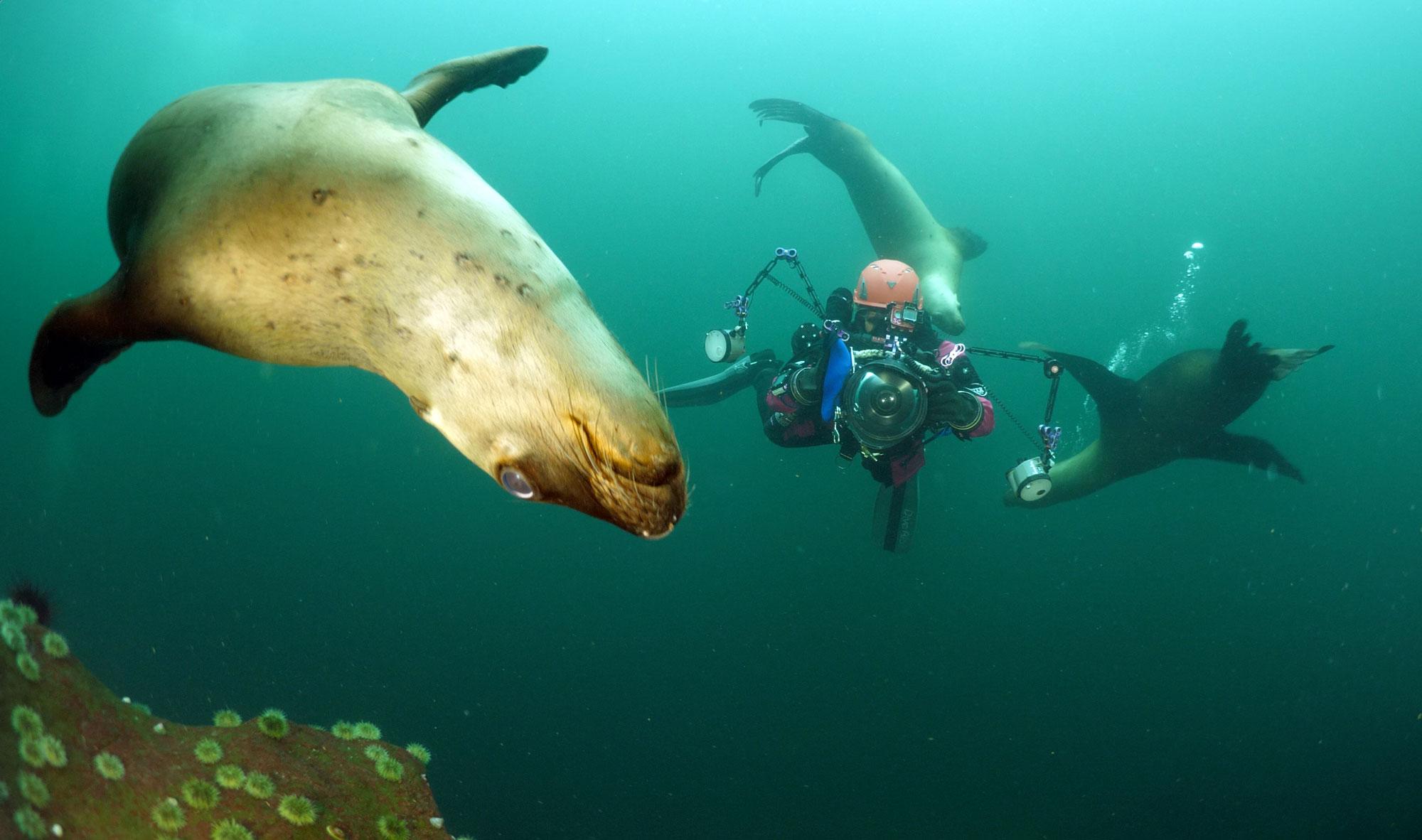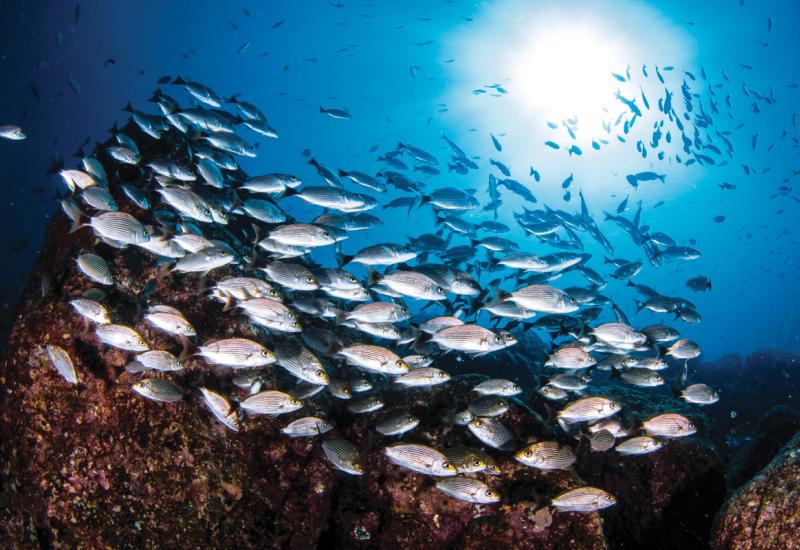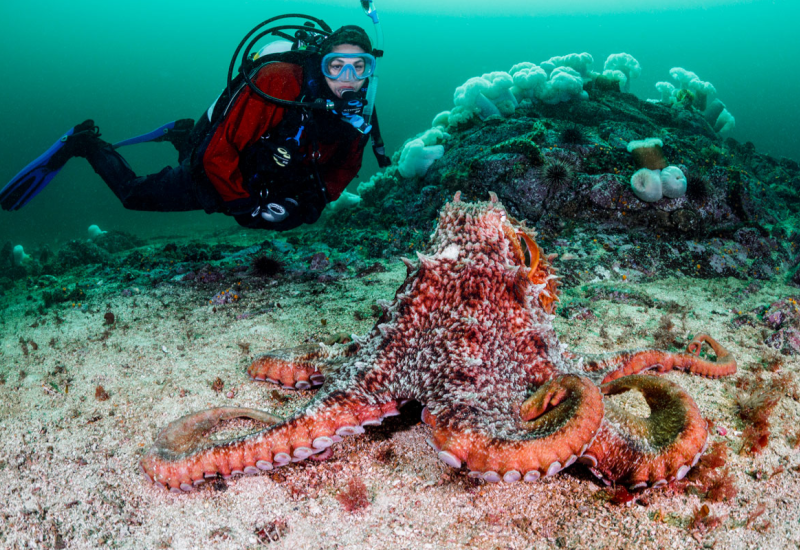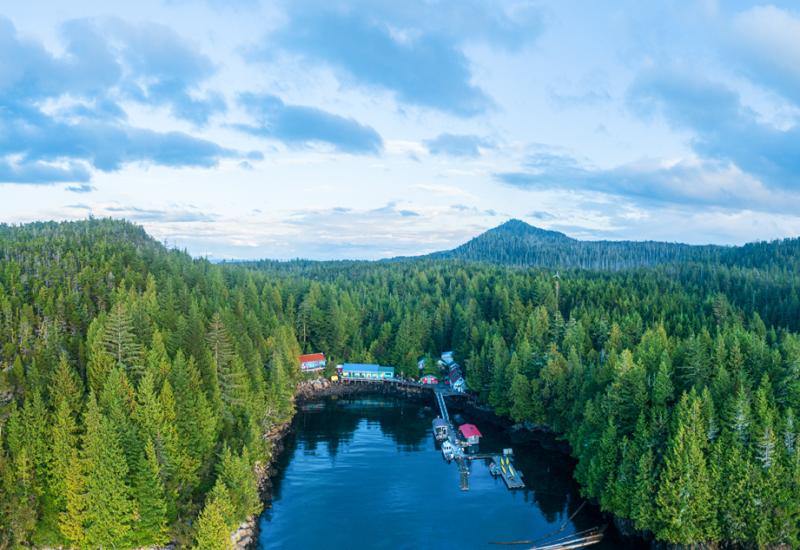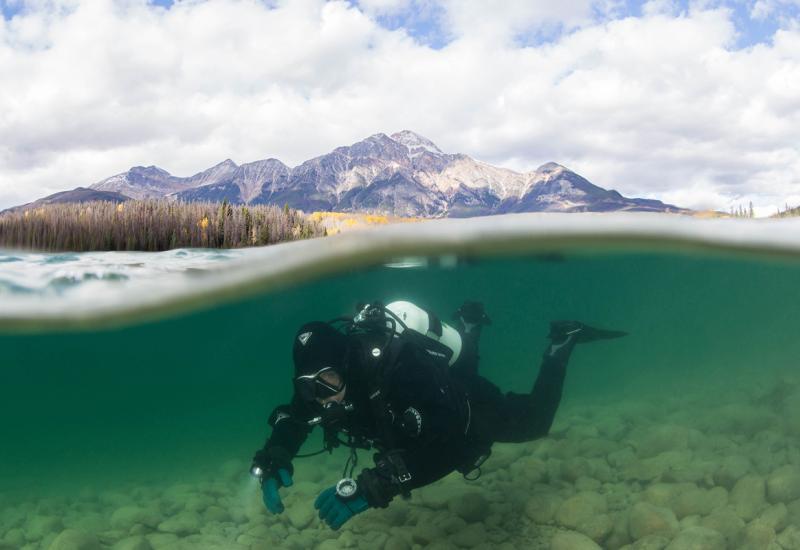Scuba Diving West Canada’s Emerald Sea
You are reading "Part Five - Scuba Diving West Canada’s Emerald Sea" in Jill Heinerth's five-part, underwater Canada series. Read the entire series here.
Dive into the iridescent waters of Canada’s west coast, and you will soon understand why it is known as one of the best diving destinations in the world. Characterized by a bounty of multi-colored inhabitants, the healthy coastal environments are known for their nutrient-rich waters. But beyond the iridescent sea pens, strawberry anemones, and curious sculpins, you might also meet Pacific giant octopus, stellar sea lions, wolf eels, and Pacific white-sided dolphins. During your surface interval, look for bald eagles, orcas, and grizzly bears. British Columbia is a vibrant and wild ecosystem graced with charismatic megafauna that will keep you coming back.
One of my favorite spots to visit is a small rocky mound five-hundred meters off the southwest end of Hornby Island called Norris Rocks. It is a playground for stellar and California sea lions. Between November and April each year, the sea lions gather to await the annual herring spawn. Around mid-to-late February, white, milky spawn supplies the sea lions with a yearly feast. The fearless marine mammals are inquisitive, and if you dive in this area, they will seek you out. Like a pack of troublesome puppies, they nip and pull on your suit, fins, and camera arms. They will even catch your exhaust bubbles and spit them back at you while they swim laps around the area and bring in their friends. Be cautious of your dive profile. They occasionally pull people to the surface to play with the other sea lions. Bites are a possibility, but rest assured, you are not on the menu. They want to play but prefer a meal of herring.
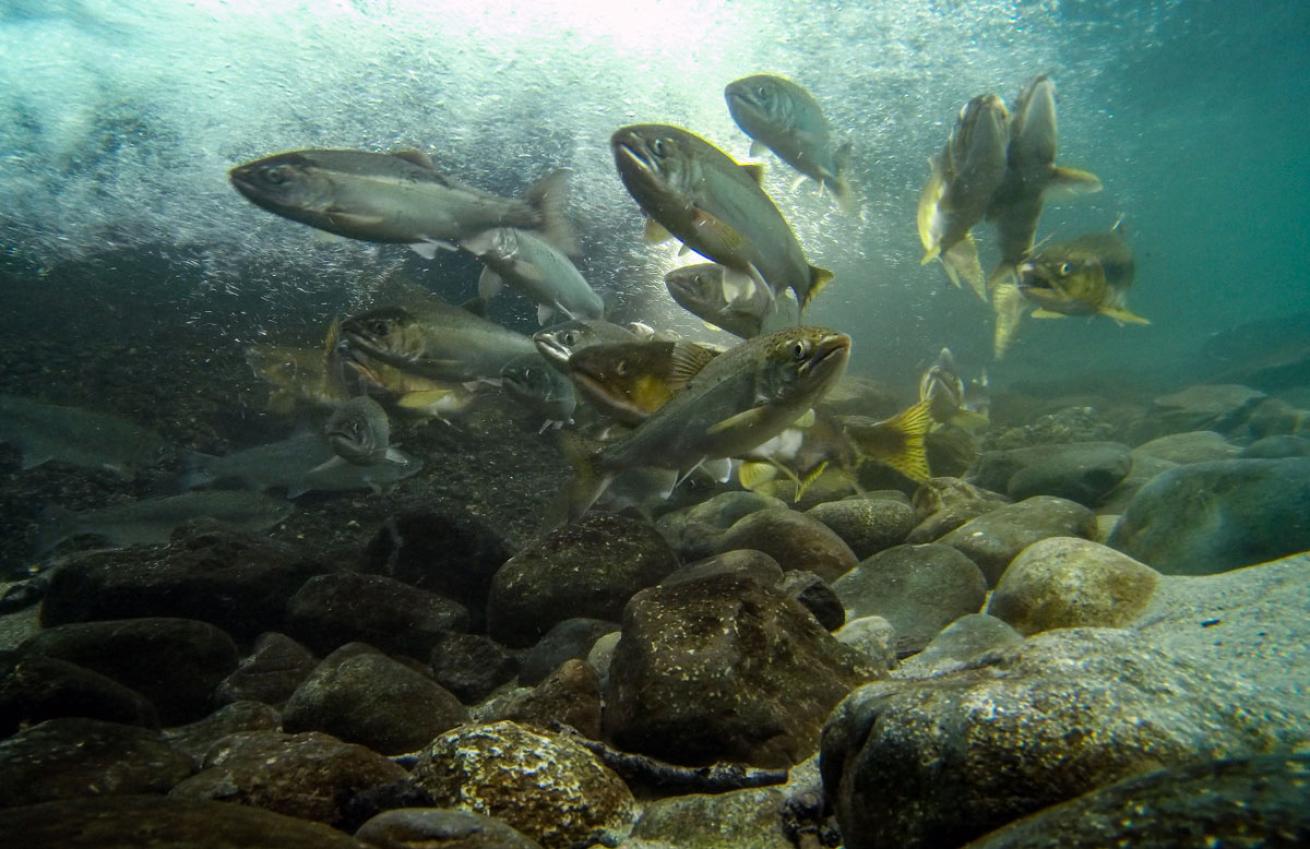
Jill HeinerthSalmon running upstream in fast water on the Campbell River.
Beyond boat diving, the shore opportunities are endless. In Campbell River, you can swim in the salmon streams to catch the migration of different species throughout the summer and fall. At the popular Whytecliff Park in Howe Sound, you’ll find plenty of diving partners at the accessible protected marine sanctuary. Plumose anemones look like giant white clouds the size of shrubs, punctuated by sprawling sun stars, sea cucumbers, and Dungeness Crabs. But this site has even more to offer. Beyond visiting octopi and harbor seals, you might even see an occasional dolphin, Humboldt Squid or six-gilled shark. There is plenty to look at beneath the rocky overhangs on the steep wall that makes up North America’s southernmost fjord.
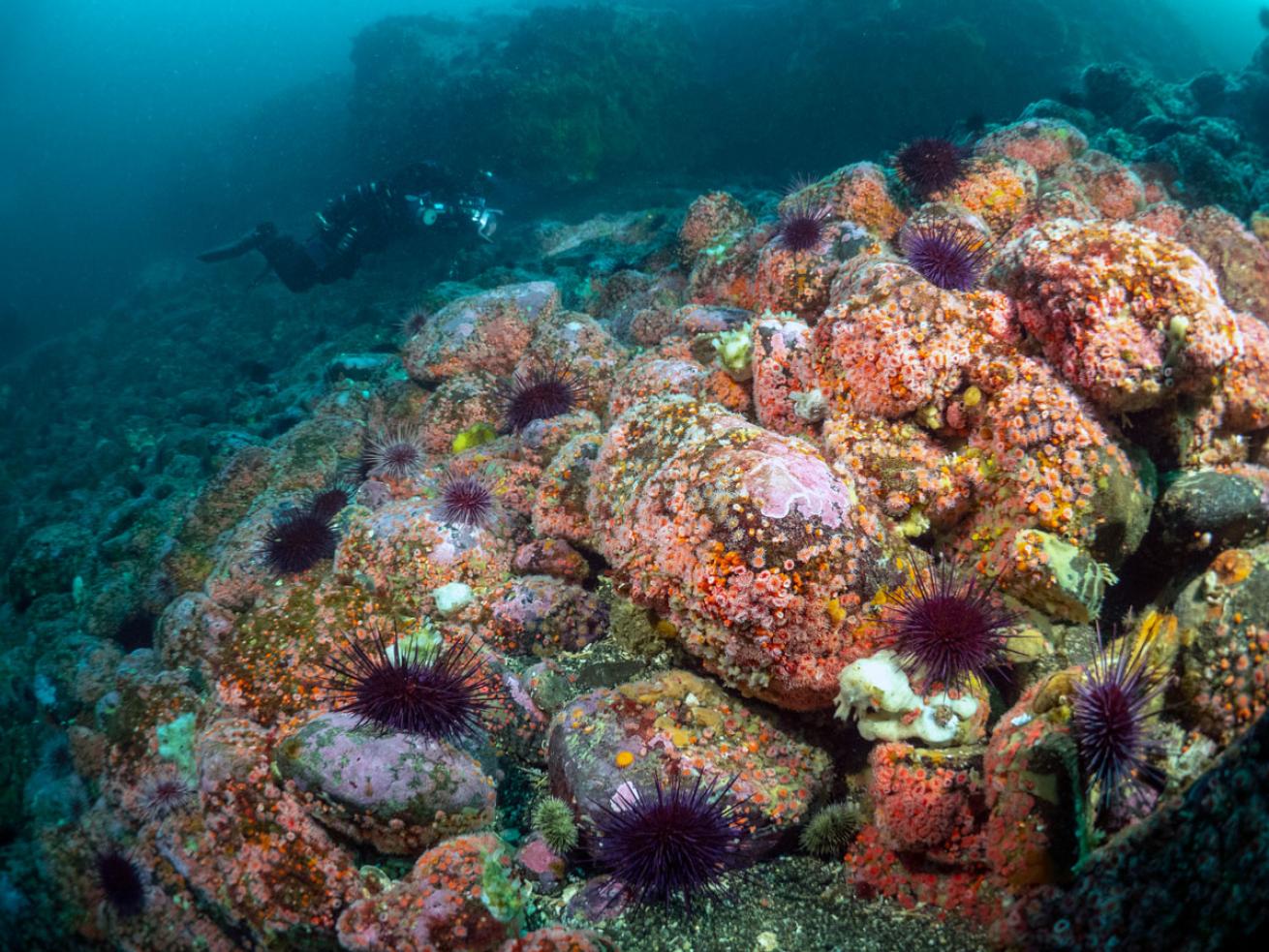
Jill HeinerthSandra Clopp enjoys the beautiful strawberry anemones at May Island.
Stray a bit deeper, and you can witness a prehistoric treasure - a glass sponge reef. Thought to be extinct over 40 million years ago, divers discovered surviving glass sponge reefs in Howe Sound in the late 1980s. These silica sponges can filter the equivalent of an Olympic-sized swimming pool in 60 seconds, and provide critical habitat for rockfish, sculpins and other organisms.
And when you need to rinse your gills with freshwater, check out Pavilion Lake, the home to one of the oldest living organisms on the planet. Stromatolites sometimes referred to as freshwater coral, might be one of the earliest lifeforms ever recorded. These large boulder-like organisms are ridged and rippled like a brain, and are being studied by NASA scientists.
Whether you want to photograph colorful nudibranchs and strawberry anemones or frolic with sea lions, British Columbia is the wild underwater coast that offers extraordinary experiences on every dive. Plunge into the Emerald Sea and be prepared for an experience that will be unforgettable.
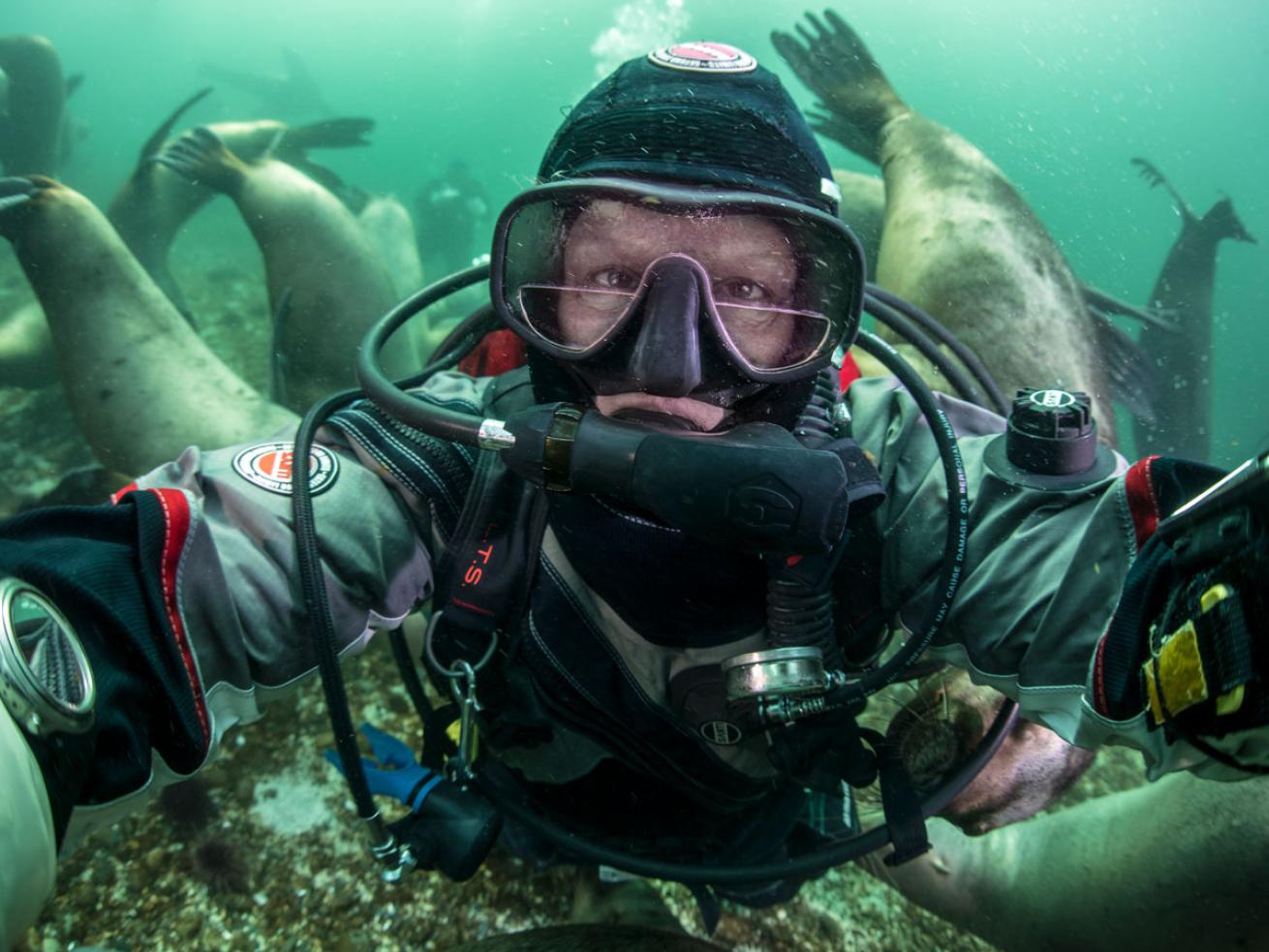
Jill HeinerthAuthor, Jill Heinerth takes a selfie of the group of sea lions following her.
Need to Know:
The water temperature in British Columbia can vary from a winter low of 7°C/45°F to 16°/61°F, but it is the tidal currents that deserve your attention. Most boat diving is coordinated carefully with the tides to avoid dangerous high flows that result in whirlpools and vertical currents. Use a reputable charter captain that understands local conditions and always carry a surface marker buoy (SMB), whistle and signal mirror in case you get too far from the boat.
For More Information: Learn about diving on the west coast through great videos, facts and links to operators: www.BeneathBC.com. Another great resource is provided by the BC Diving Industry Association at: http://www.diveindustryassociation.com. You’ll find operators, resorts and site info for the most popular spots across the province.
Local Operators:
• Ocean Pro Divers - Surrey, BC
• Pacific Pro Dive - Campbell River, BC
• Big Animal Encounters, Campbell River, BC
• International Diving Center - Vancouver, BC
• Vancouver Diving Locker
Parting Words from Author, Jill Heinerth
If you are interested in diving the rest of underwater Canada, please check out the first four installments in this series. I’ll leave you with this parting message from PADI Canada’s Charles Dupont, a veteran of 40 years of diving across Canada.
“From shore diving with harbor seals in British Columbia to altitude diving in a glacier-fed lake in the Albertan Rockies to endless fields of multi-colored anemones in the Maritimes provinces to diving alongside an iceberg in Newfoundland, the underwater scenery never ceases to amaze me. I often find myself drawn to the St. Lawrence River and the Great Lakes for the perfect conditions to preserve hundreds of shipwrecks. Divers around the world are united by their passion and nowhere is it truer than in Canada. Through my work in the diving industry, I feel blessed to have met so many passionate and kind people as Canadian divers.”

